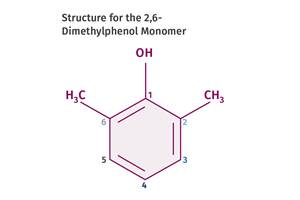First Expandable TPU is Key to Revolutionizing the Bicycle Saddle
BASF’s E-TPU and Ergon’s design and engineering knowhow have led to the ST Core Ultra bike saddle.
It was just four years ago that BASF launched what is believed to be the first expandable TPU (E-TPU). Known as Infinergy, the material is based on BASF’s Elastollan TPU which is expanded via use of an innovative procedure. Infinergy closed-cell particle foam boasts a low bulk weight, with a density of 110 kilograms per cubic meter. After processing on standard molding machines, it has a molded part weight of 200 to 320 kg/m3, which positions it between the generally lighter EPS or EPP and the heavier elastomeric PUR foams. It also boasts less than 2% by volume in 24 hrs of water absorption along with a very high breaking elongation of between 100-150% depending on density, and a combinations of good abrasion- and chemical-resistance.
Fast forward, and Infinergy E-TPU—through a collaborative effort between BASF and Germany’s Ergon, a design and engineering firm with the aim to develop products that offer “perfect ergonomics” for cyclists—is playing the major role in revolutionizing the bicycle saddle.
In fact, the partners note that there has been no significant changes to bicycle saddle technology since the 1960s, with most models conforming to a standardized principle: rails, saddle shell, padding, cover. This construction’s disadvantage is that the seat shell—being the substructure for the padding—results in a stiff seat shell, which restricts seating comfort.
By focusing on this aspect in particular, Ergon’s R&D team was led, in their view, to the development of the revolutionary ‘TwinShell technology’, with an ergonomic core. Two shells function in isolation from each other in a sandwich construction, held in a floating arrangement by a high-performance elastomer damper made of BASF’s Infinergy. The lower, supporting shell performs a load-bearing function while the upper, flexible seat shell supports the padding.
This design principle both increases comfort and also allows for an entirely new form of pedaling ergonomics. As a result of isolating the seat shell from the supporting shell, the saddle follows the natural pedaling movements in all directions. This has the advantages of: systematically combining optimized pressure distribution across the site bones, efficient pedaling ergonomics, excellent vibration damping and active back protection.
Meanwhile, the Ergon core is made of Infinergy as well. This innovative material is setting new standards in relation to damping and suspension due to thousands of light and highly elastic foam particles. The high elasticity reportedly optimizes the damping of pressure in the seat area. As soon as the pressure impulse has passed, the foam springs back into its old shape. The material retains this property even under continuous load. The Ergon core thus is said to ensure a direct damping response and the highest possible resilience, as well as maximum durability at minimal material weight. This E-TPU foam has already been used successfully by leading manufacturers in the safety and running shoe sectors.
Commenting on the new ST Core Ultra—to be made commercially available in the U.S. and Europe starting February 2018, Ergon founder and CEO Frank Arnold noted:
“The idea of a design principle using TwinShell technology and an ergonomic core has been around for a while, but we were never able to find a suitable material on the market to implement this project. Now, Infinergy from BASF has exceeded our expectations. I am absolutely certain that Ergon will cause a stir in the bicycle industry with its ST Core Ultra.”
Related Content
Tracing the History of Polymeric Materials: Polyphenylene Oxide
Behind the scenes of the discovery of PPO.
Read MoreHow Do You Like Your Acetal: Homopolymer or Copolymer?
Acetal materials have been a commercial option for more than 50 years.
Read MoreScaling Up Sustainable Solutions for Fiber Reinforced Composite Materials
Oak Ridge National Laboratory's Sustainable Manufacturing Technologies Group helps industrial partners tackle the sustainability challenges presented by fiber-reinforced composite materials.
Read MoreMelt Flow Rate Testing–Part 1
Though often criticized, MFR is a very good gauge of the relative average molecular weight of the polymer. Since molecular weight (MW) is the driving force behind performance in polymers, it turns out to be a very useful number.
Read MoreRead Next
Understanding Melting in Single-Screw Extruders
You can better visualize the melting process by “flipping” the observation point so that the barrel appears to be turning clockwise around a stationary screw.
Read MoreHow Polymer Melts in Single-Screw Extruders
Understanding how polymer melts in a single-screw extruder could help you optimize your screw design to eliminate defect-causing solid polymer fragments.
Read MoreTroubleshooting Screw and Barrel Wear in Extrusion
Extruder screws and barrels will wear over time. If you are seeing a reduction in specific rate and higher discharge temperatures, wear is the likely culprit.
Read More


























